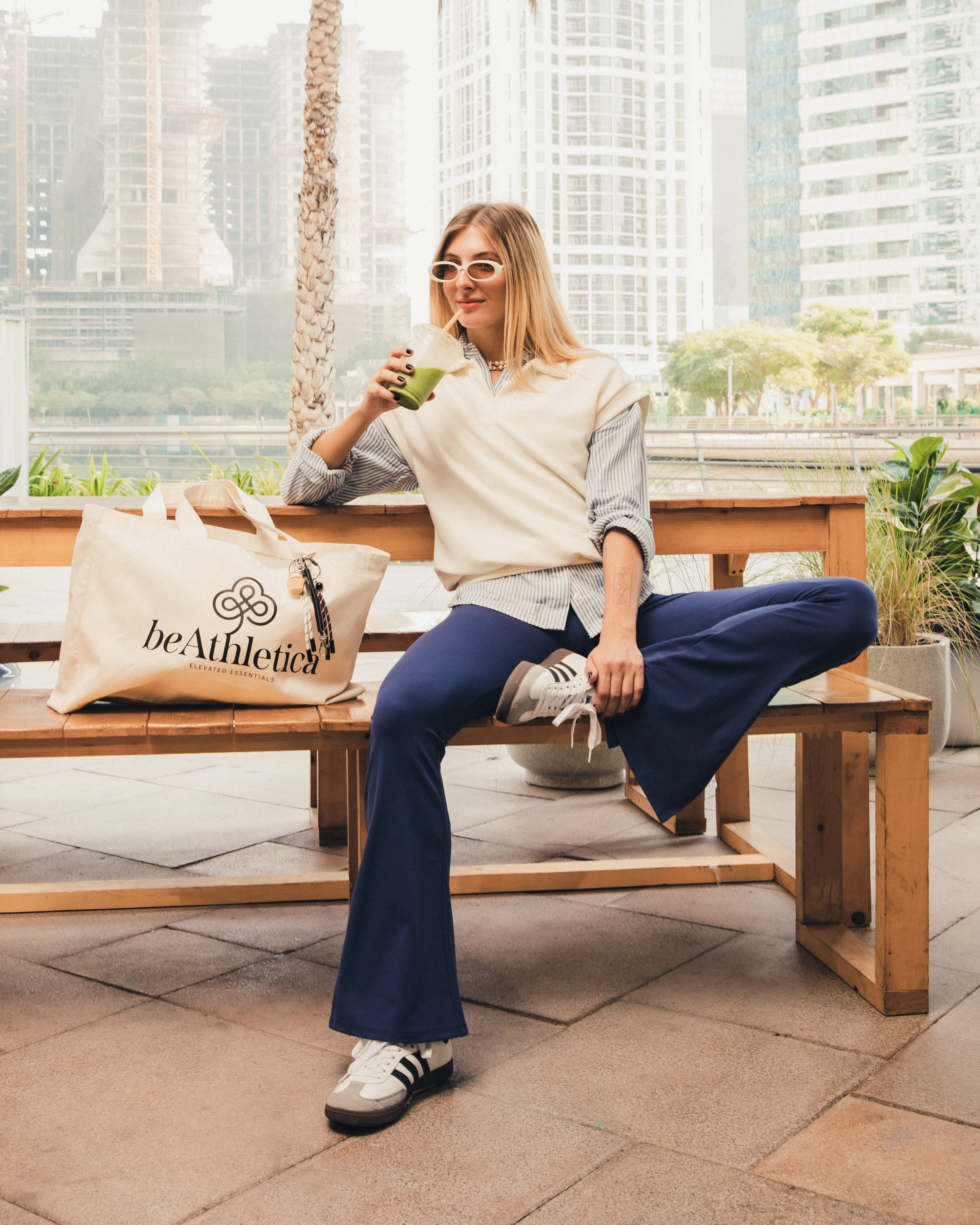
Bringing a fresh perspective to the intersection of fashion and function, beAthletica is carving a bold path in the activewear space, one timeless staple at a time. Rooted in conscious creation, beAthletica’s debut collection is 100% manufactured locally in the UAE using premium deadstock fabric, i.e. pre-loved, high-quality materials that might otherwise have gone to waste. Each drop is limited, intentional and truly one-of-a-kind, with no restocks, as the next collection is already being shaped by a fresh selection of fabrics and silhouettes.
Inspired by the rhythm of the modern woman’s life, which is fluid, fast-paced, and fiercely individual, beAthletica is redefining what “everyday, everywhere” dressing looks like. L’Officiel Arabia speaks to Founder Gauri Sarma for deeper insights.
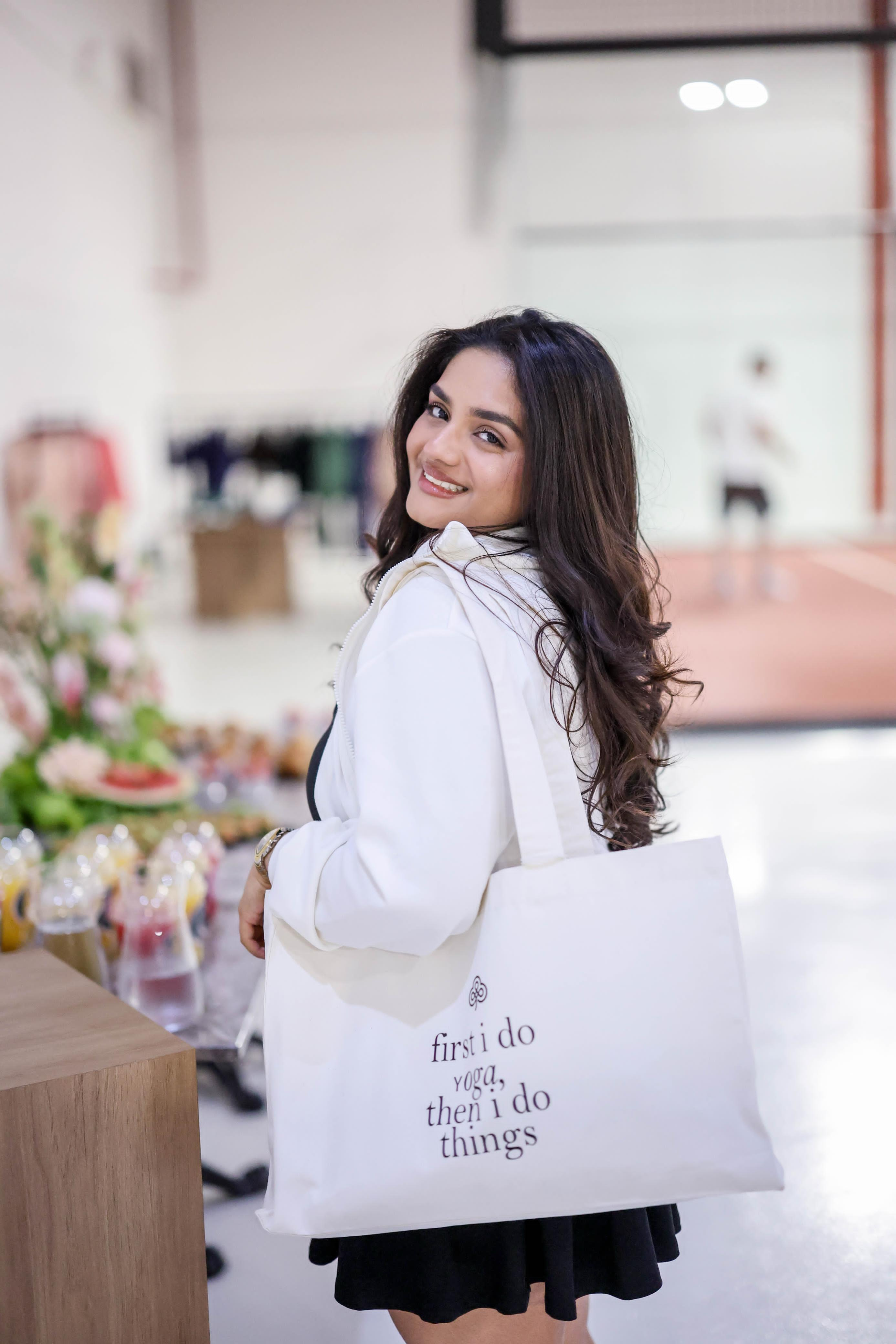
Delna Mistry Anand: Firstly, congratulations on the launch! Do tell us what inspired beAthletica’s unique approach of working with deadstock fabric?
Gauri Sarma: Thank you so much, our inspiration behind beAthletica came from a simple but powerful realisation, that sustainability in supply chain sourcing doesn't have to mean compromise, especially for a brand in a space as competitive as activewear. The impact of intentional design, timelessness and impact doesn't mean we need to cut corners on the commercial aspects of what makes a brand successful. While visiting fabric mills and factories, I noticed something that most brands overlooked - rolls of high-quality, certified fabric were sitting unused. The yardage was too small for mass production, often enough for just 50 to 200 pieces. For bigger brands, it's usually not worth the effort, but for me, it was the perfect starting point and that’s how beAthletica was born, activewear sourced and manufactured responsibly, produced in truly limited quantities. Each piece is part of a small, exclusively run collection, when it's out of stock, it's truly gone forever.
That’s a bold move in a market driven by fast cycles. What does working with reclaimed fabric mean creatively?
Yes in a way it is. Working with reclaimed fabric means flipping the traditional design process. Most brands start with a design or concept, they sketch out styles, choose specific colours and fabrics, and then order those exact materials to match their vision. But at beAthletica, we have to do things in reverse. We start by going into factories and sourcing what's already there - high-quality leftover fabrics that would otherwise go to waste. We create a mini “database” of these fabrics, and each one goes through a detailed vetting process. We test it for colourfastness, durability and stretch, and we dig into the history of the yardage, the fabric composition has to be relevant and top-quality for activewear. Only once we know what we’re working with do we begin designing. We let the fabric and colours available guide the style. Every piece is created based on what’s available, which makes our collections truly limited and creatively led by sustainability.
Yes, this isn’t the easiest way, but it’s the way that makes sense to us, and if we're making an impact in some way, it makes the finished product all the more worth it. Our FW24 collection had some colours that were not traditionally 'commercial', but proved to be some of the best-selling colours on our site, which truly goes to show results when we design with intent.
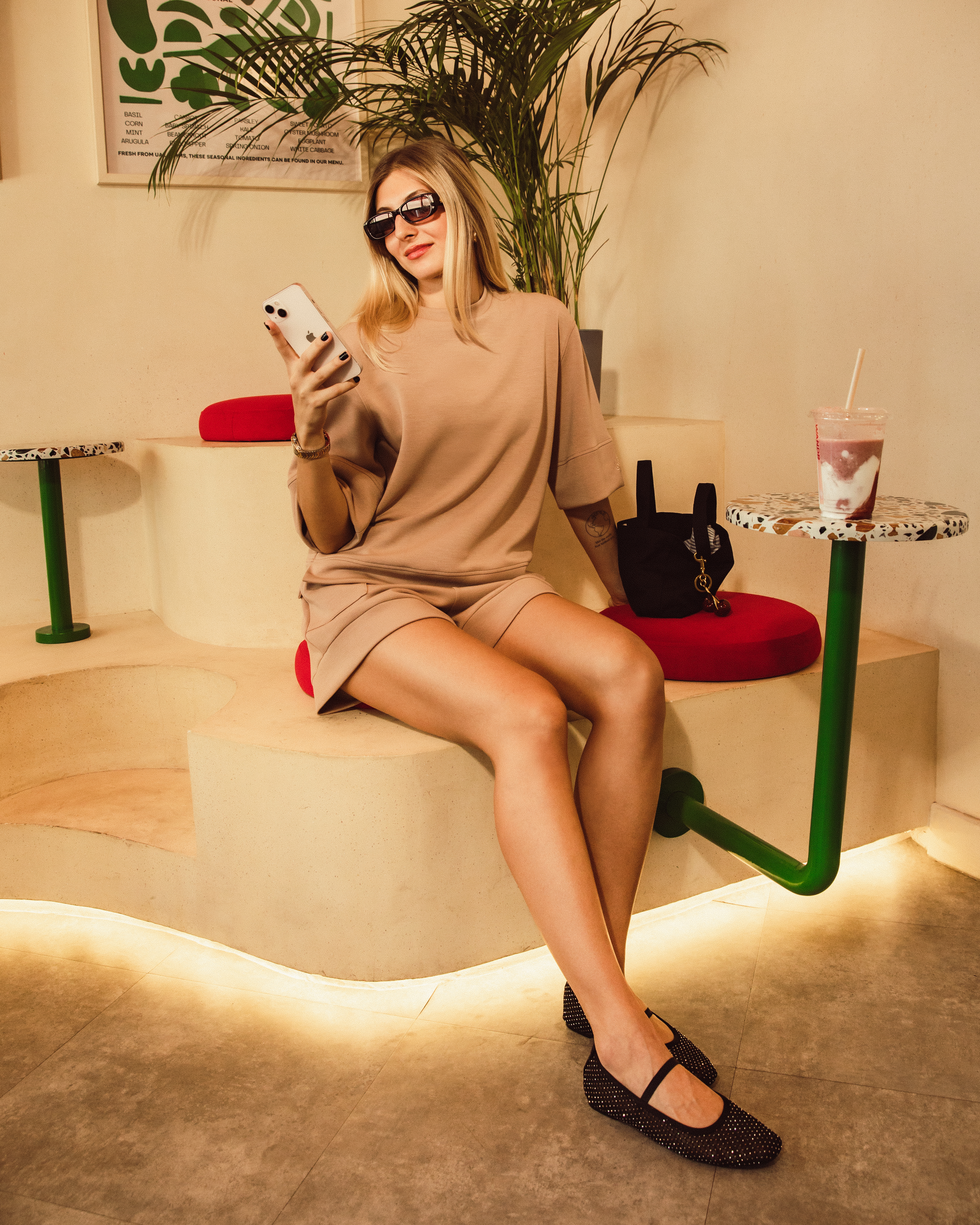
What is it that makes beAthletica’s sustainability different from the buzzword-heavy norm?
This is exactly why I actually try to avoid using the word "sustainable" too much—it’s become such an umbrella term that it often loses meaning. For us at beAthletica, the focus is on reforming supply chain transparency. That means having clear accountability from the very beginning—where the fabric comes from—all the way through to the final product landing in your hands.
While we're young and learning every day, we’ve made a strong start. Our approach is about sourcing fabric that already exists, instead of producing more. It’s about designing with intention, so each piece lasts and earns its place in your wardrobe. It’s about transparent manufacturing, where I personally know and work with the people behind every product.
Everything we make is limited edition, not mass-produced. While all of this might fall under the umbrella of “sustainability,” to me, it’s much more specific. Every part of how this brand operates has been built with care and intent, and that makes our approach very different from the usual, surface-level take you see in the industry.
Tell us about the function.... and is it just as important as form?
Functionality is non-negotiable in our brand ethos. At beAthletica, if a piece doesn’t move well, feel good, or hold up through wear, it doesn’t matter how nice it looks. That’s always the starting point: the product has to work for our customer first. At the same time, we care deeply about form. We want you to feel confident when you put something on, like it actually reflects your everyday style, not just your workout. But I don’t believe in choosing one over the other. The goal is to design something that performs well and looks great, without sacrificing either.
We test our pieces thoroughly—fit, fabric, stretch, breathability and support. But we also pay attention to the way it sits on your body, how it flatters, and how it holds up over time. So yes, function and form are both important—but function leads the way.
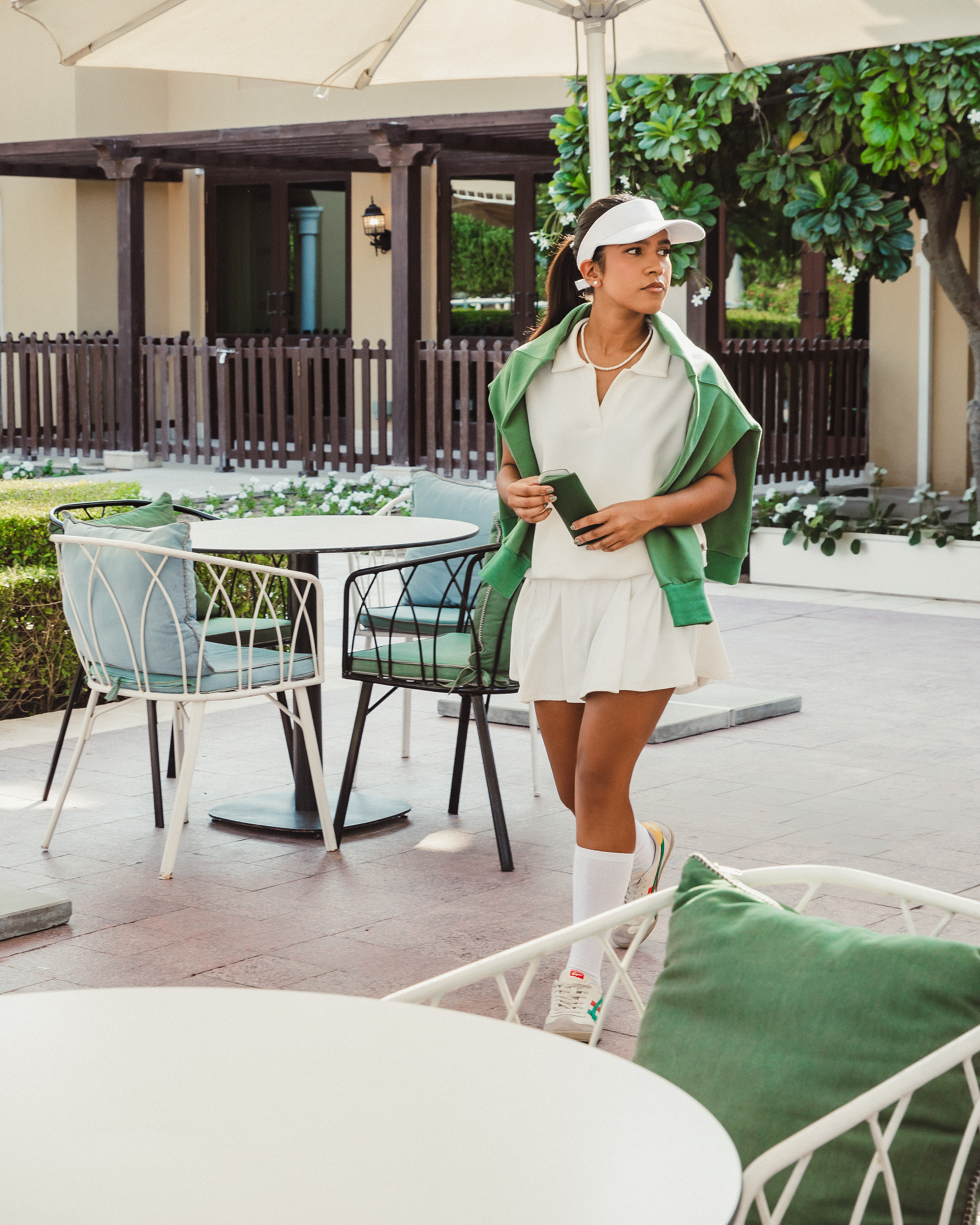
How important is it for the brand’s DNA to be made locally? Tell us about this process.
Coming from a strong background in apparel sourcing, I know how important it is—especially at this early stage of the business—to keep a firm hold on the reins. That’s why it’s been so important for us to keep our production local. It allows us to have full visibility over the process. Who’s making our garments, how they’re being made, and where everything stands at any given time. It also means we’re able to act fast. Customer feedback—although minimal so far—gets addressed almost immediately. We’ve been able to make adjustments to the product and fit within just three business days. That kind of turnaround is only possible because we have a hands-on team locally that’s deeply involved in the product.
In the future, I definitely see us working with factories abroad that specialize in certain product categories or fabrics, so we can continue to give our customers the best. A great example is our socks, which are currently made in Turkey with a partner factory that truly excels in that category. The quality they produce is unmatched, and for us, that’s what it’s all about—choosing partners who align with our standards, no matter where they are.
It's never about cutting corners—it’s always about finding the right people to bring the best product to life, but our core sourcing model is not subject to change, regardless of the region we manufacture in.

And finally, what’s next for beAthletica?
We’re getting ready to drop our SS25 collection this May, which pays homage to the world of racket sports—a theme we’re so excited to explore. This collection marks the start of us expanding beyond our current assortment. We're playing around with new accessories and fresh clothing categories, bringing even more variety to the beAthletica wardrobe.
Looking ahead, we’ve got some big plans in motion this year. From entering new global markets to tapping into an entirely new segment for the brand.
www.beathletica.com/
@shopbeathletica/
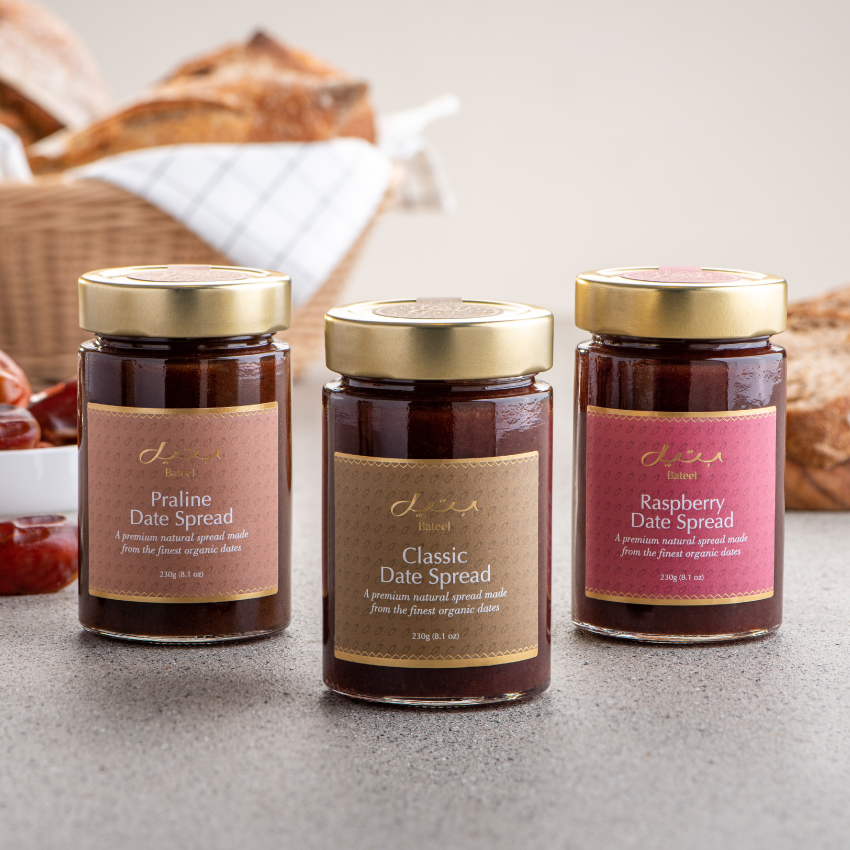

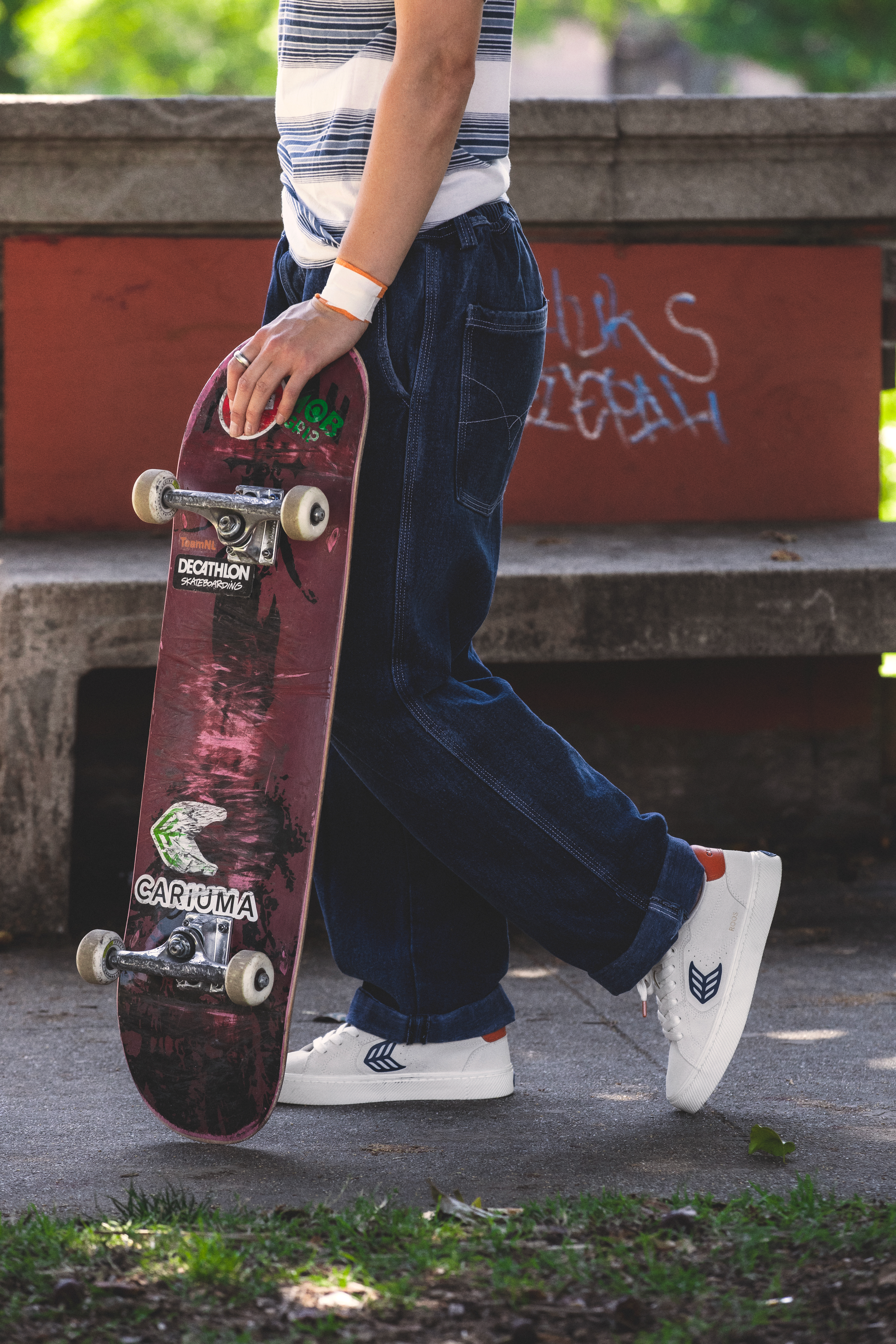
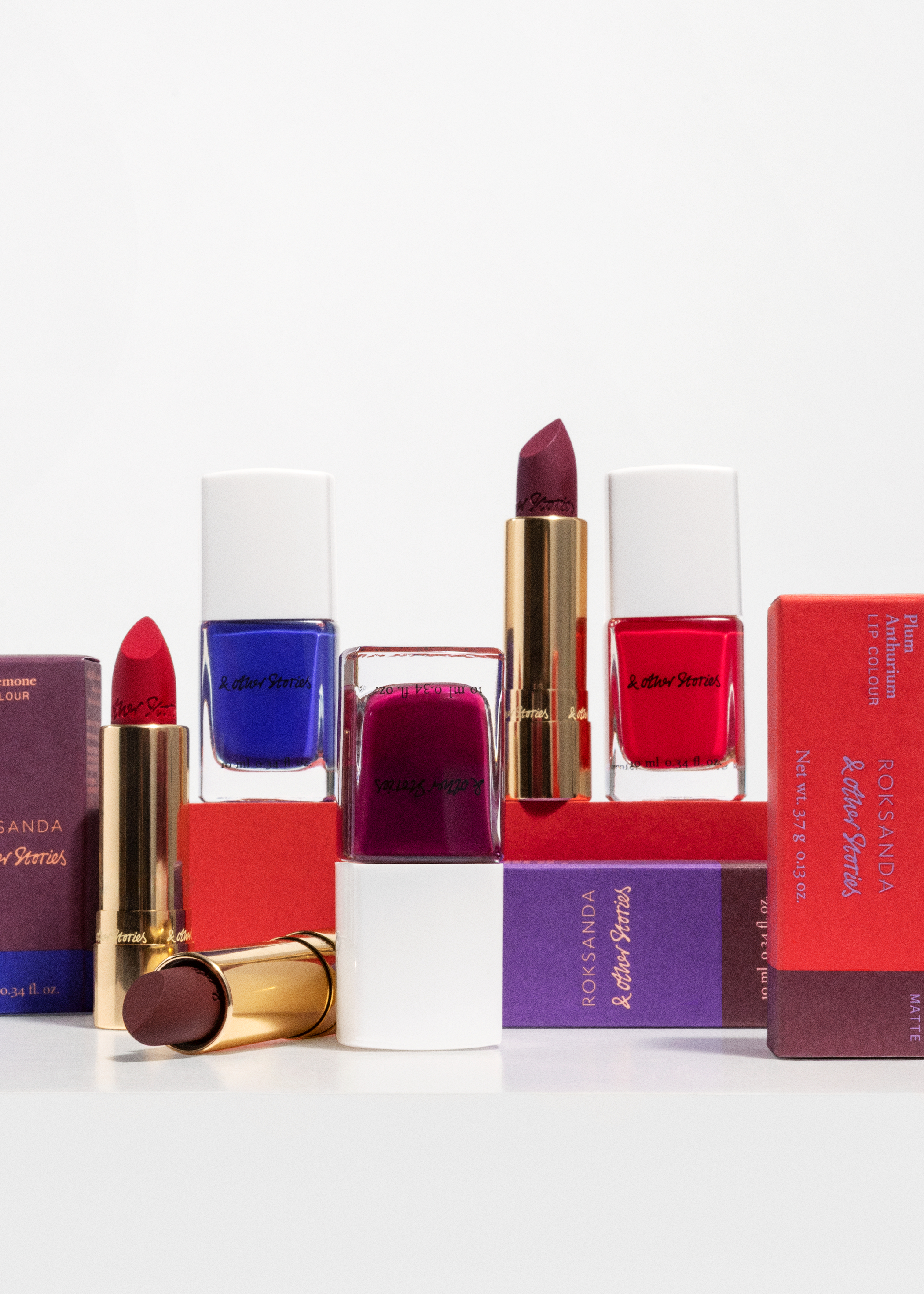
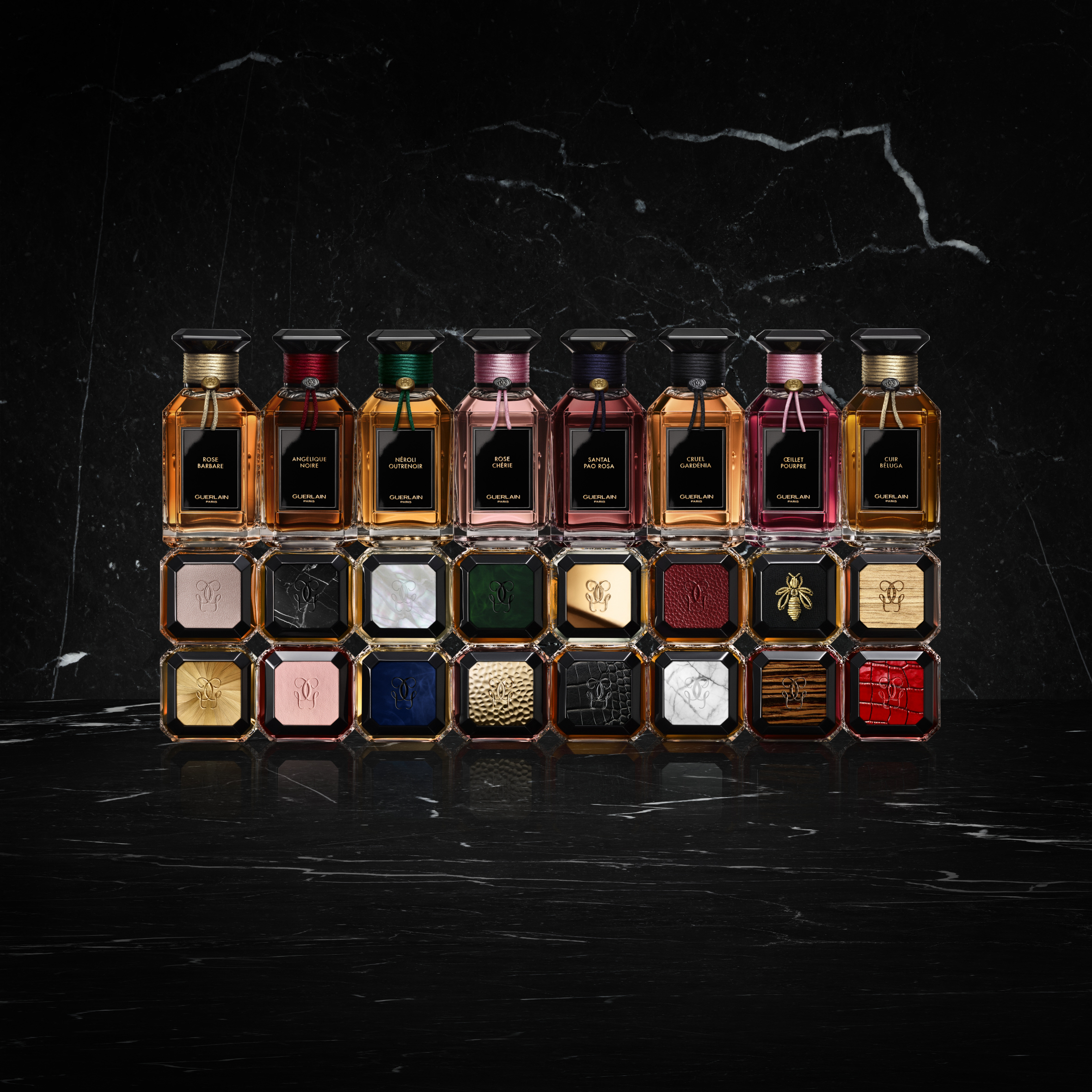
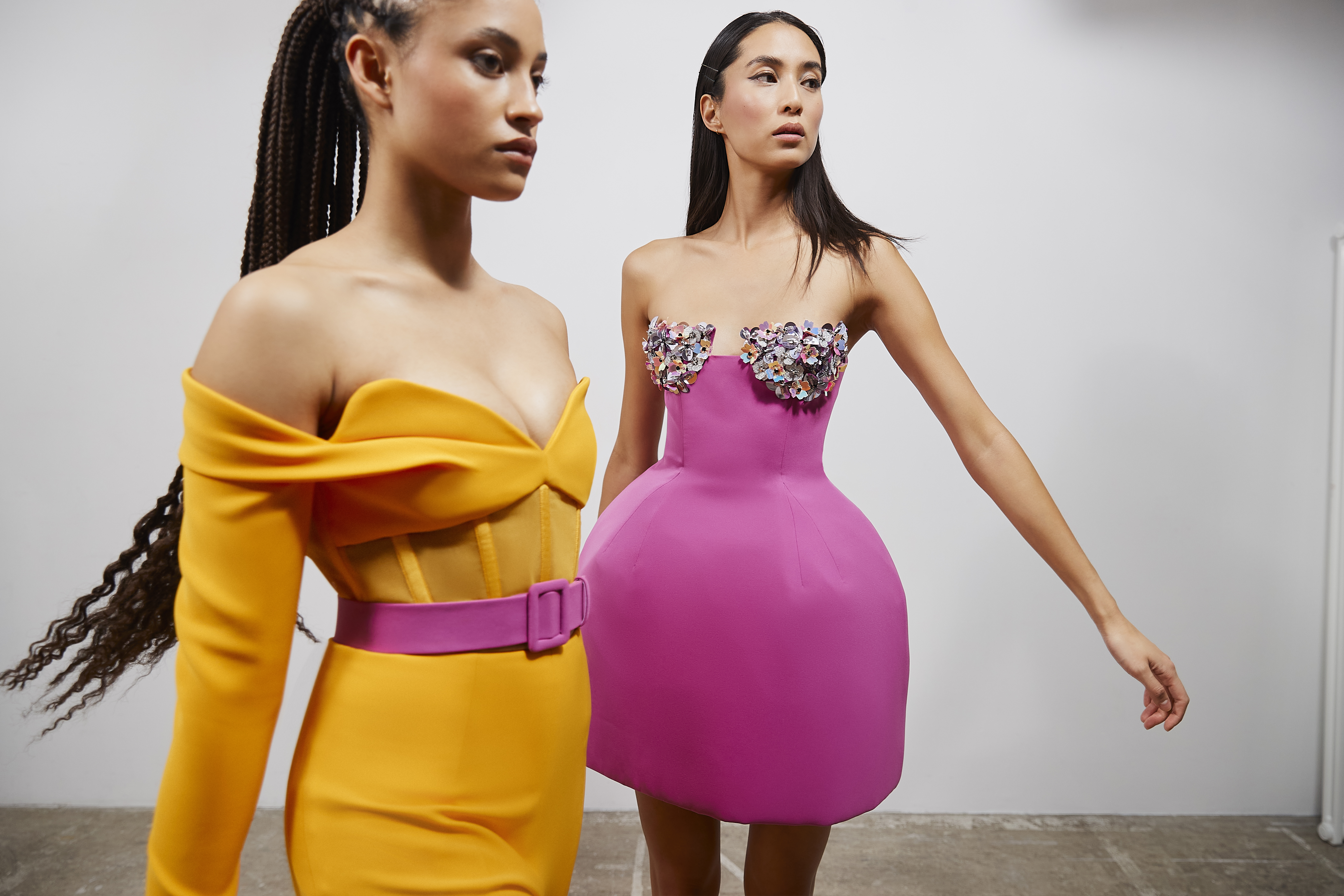


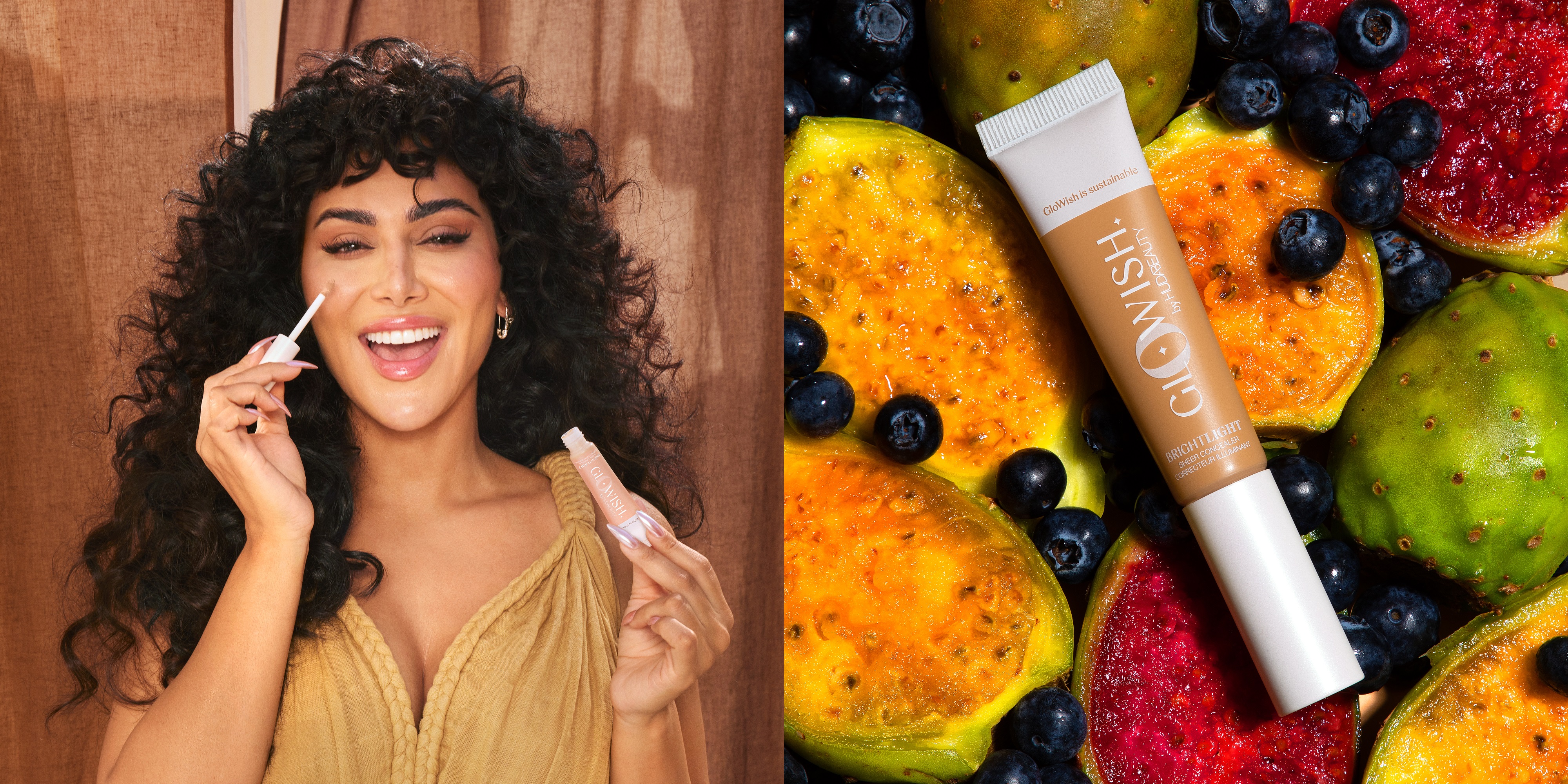
.jpg)
